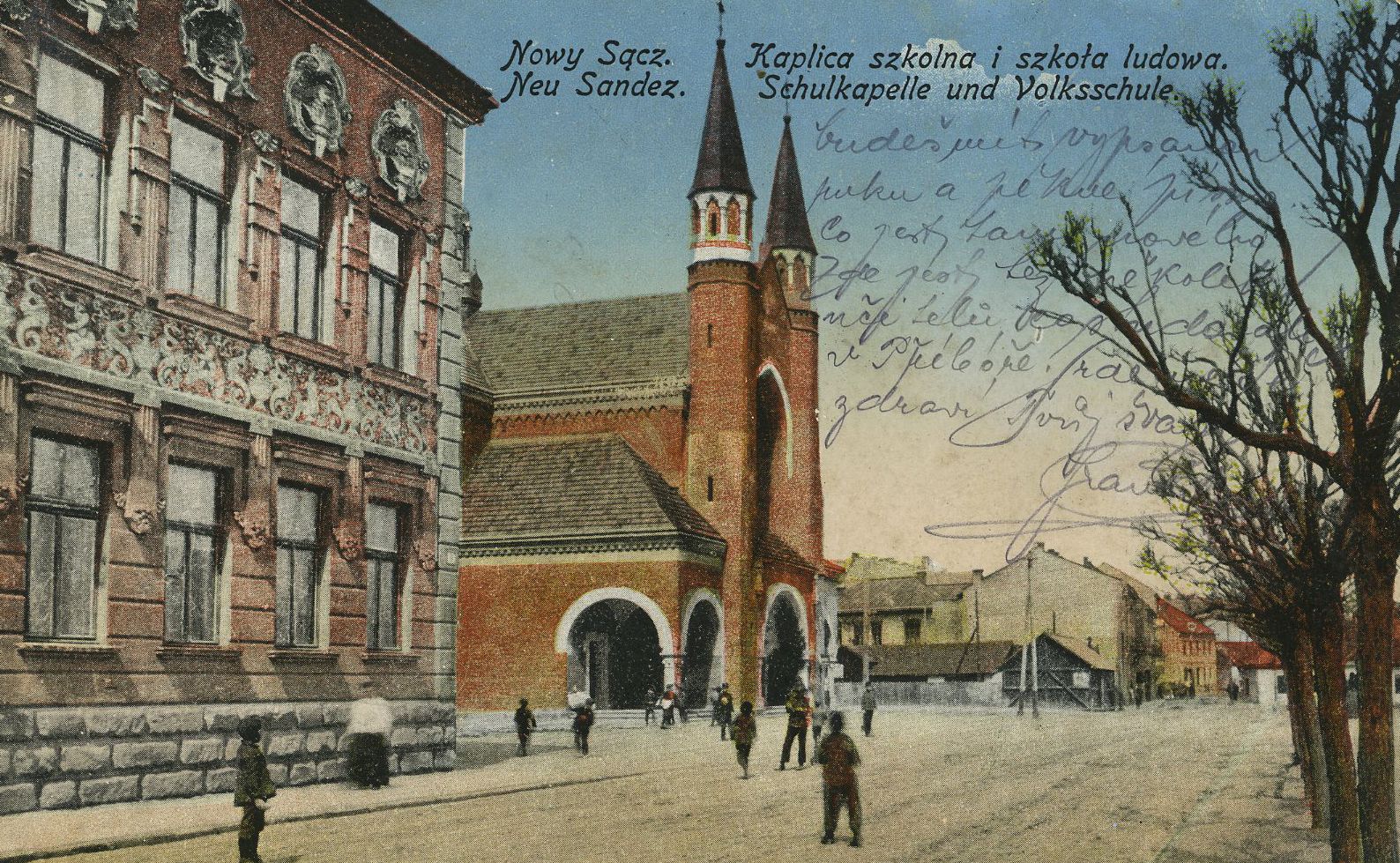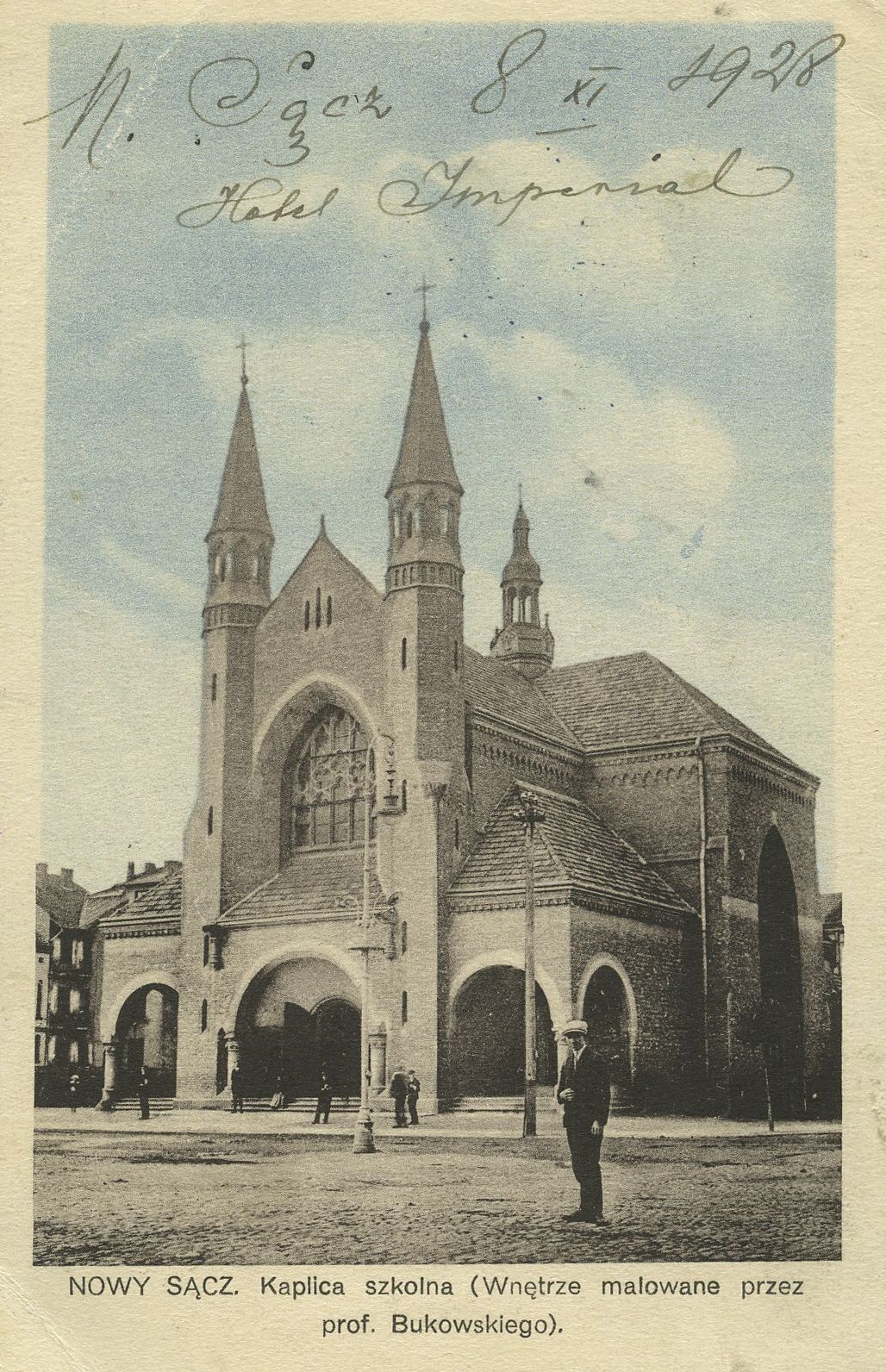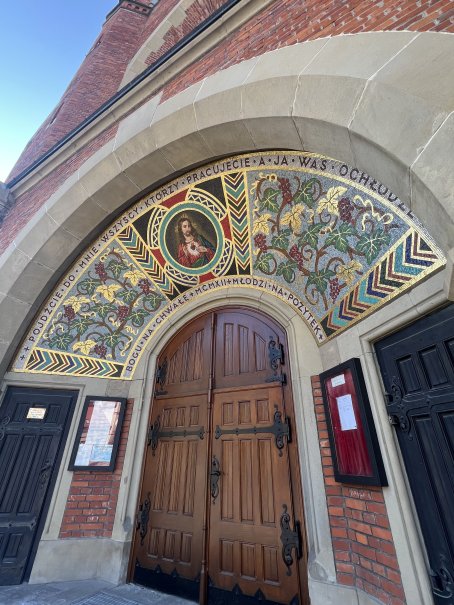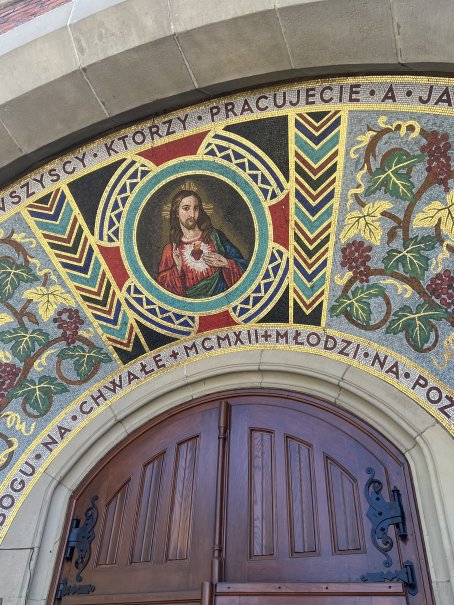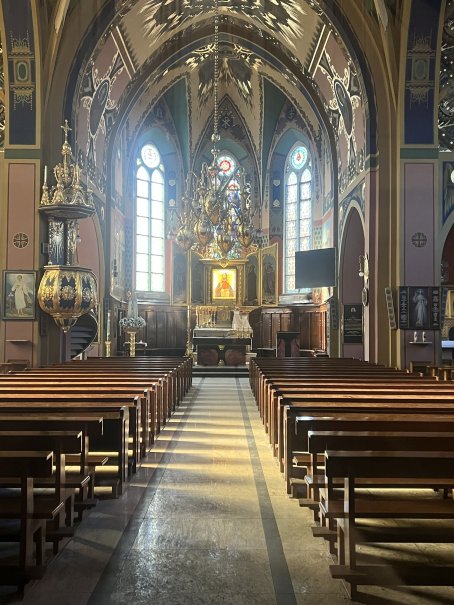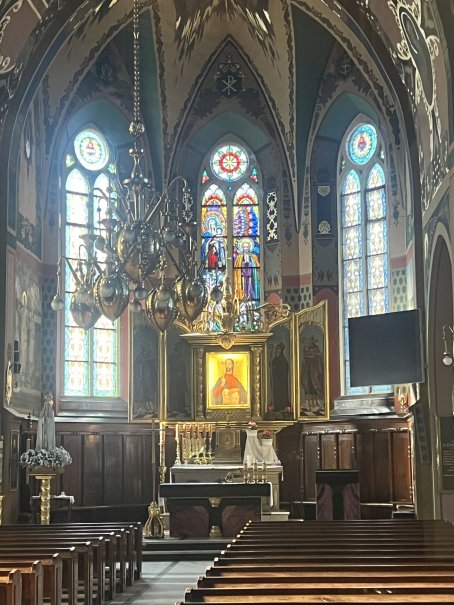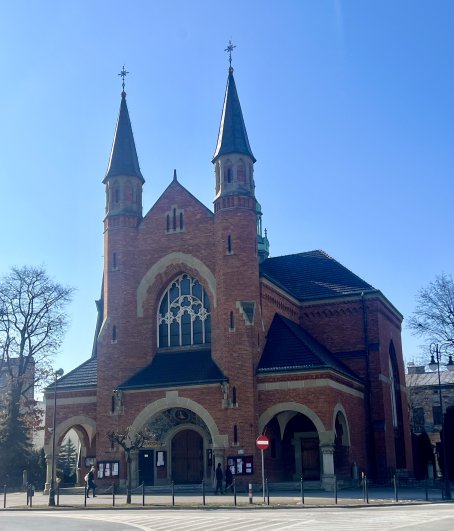Church of St. Kazimierza in Nowy Sącz – some initial facts
The beginnings of the Nowy Sącz church of St. Kazimierz dates back to the end of the 19th century, when, at the request of Ludwik Małecki, a junior high school professor, the School Chapel Construction Committee was established. The construction of the sacred building, designed by the famous architect Teodor Talowski, began in 1908. Earthworks, masonry and covering the church with roof tiles were performed by Jan Solecki, carpentry works by Jan Kwarciński, stonework by Jędrzej Czuba, sheet metal work by Władysław Zabża, iron and concrete vault by Janesch & Schnell. In 1912, the neo-Gothic temple was completed. On April 23, 1913, it was consecrated by Fr. miter by Alojzy Góralik; the first sermon was delivered by Fr. Michał Nowicki, rector of the church.
The newly built church (with two characteristic turrets) had stained glass windows designed by Stefan Matejko, Jan Matejko's nephew, depicting Saint. Louis and Our Lady in a mandrola, St. Kazimierz Królewicz and Our Lady of Dawn and the Holy Family in the presbytery. In 1925, during the term of office of rector by Fr. Michał Klamut, the church was decorated with polychrome by Jan Bukowski, a graduate of the Nowy Sącz junior high school, from 1912 professor. School of Artistic Industry in Krakow, which is a faculty of the State Industrial School. The final effect of this work aroused genuine admiration among the inhabitants of Nowy Sącz. As written in the Memorial Book of the parish of St. Kazimierz: "Removing the scaffolding and revealing the interior [...], shiny with various colors, especially gold, delighted people [the painting decoration] pulled the temple upwards illusively and created a harmonious whole that distinguished this church from all those located in Podhale." Further fundamental changes in the temple's decoration took place in 1928, after Jan Bukowski designed the Art Nouveau main altar (in the central part with a painting of Our Lady of Częstochowa, in the side wings with images of St. Adalbert, St. Casimir, Blessed Kinga and St. Stanisław) and the pulpit.
The newly built church (with two characteristic turrets) had stained glass windows designed by Stefan Matejko, Jan Matejko's nephew, depicting Saint. Louis and Our Lady in a mandrola, St. Kazimierz Królewicz and Our Lady of Dawn and the Holy Family in the presbytery. In 1925, during the term of office of rector by Fr. Michał Klamut, the church was decorated with polychrome by Jan Bukowski, a graduate of the Nowy Sącz junior high school, from 1912 professor. School of Artistic Industry in Krakow, which is a faculty of the State Industrial School. The final effect of this work aroused genuine admiration among the inhabitants of Nowy Sącz. As written in the Memorial Book of the parish of St. Kazimierz: "Removing the scaffolding and revealing the interior [...], shiny with various colors, especially gold, delighted people [the painting decoration] pulled the temple upwards illusively and created a harmonious whole that distinguished this church from all those located in Podhale." Further fundamental changes in the temple's decoration took place in 1928, after Jan Bukowski designed the Art Nouveau main altar (in the central part with a painting of Our Lady of Częstochowa, in the side wings with images of St. Adalbert, St. Casimir, Blessed Kinga and St. Stanisław) and the pulpit.
An interesting fact is that in 1927, the Franciscan friar Bernardino Rizzi, professor of music and conductor of the Cecilian Choir he founded at the Franciscan Basilica in Krakow, gave a concert in the school chapel. This fact seems to confirm the view that the temple had a good-quality organ from the very beginning, made in 1912 by the famous organ builder Tomasz Fall from Szczyrzyc, renovated in 1925, most likely by Bartłomiej Ziemiański (P. Pasternak, Organs and their makers in the area of Nowy Sącz, Nowy Sącz 2018).
The third rector of the school chapel was Fr. Dr. Jędrzej Cierniak, continuing the work of beautifying the temple, as evidenced by placing a mosaic with a medallion of the Sacred Heart of Jesus in the arch of the main entrance portal in 1931 (medallion according to Father Albert Pieczonka, vine ornament according to a drawing by Jan Bukowski). This work aroused universal recognition. This is confirmed by the source, stating: "The mosaic caused a furore of admiration, because there was nothing similar anywhere in Nowy Sącz. Not only Catholics, but also Jewish people came to see these new decorations of the church” (Book of Remembrance...). A slightly later achievement was the installation of a bell in the church, made by the bell-founding company of Karol Schwabe in Biała, confiscated by the Germans in 1941.
Author: Leszek Migrała
Author: Leszek Migrała
5 Photos


